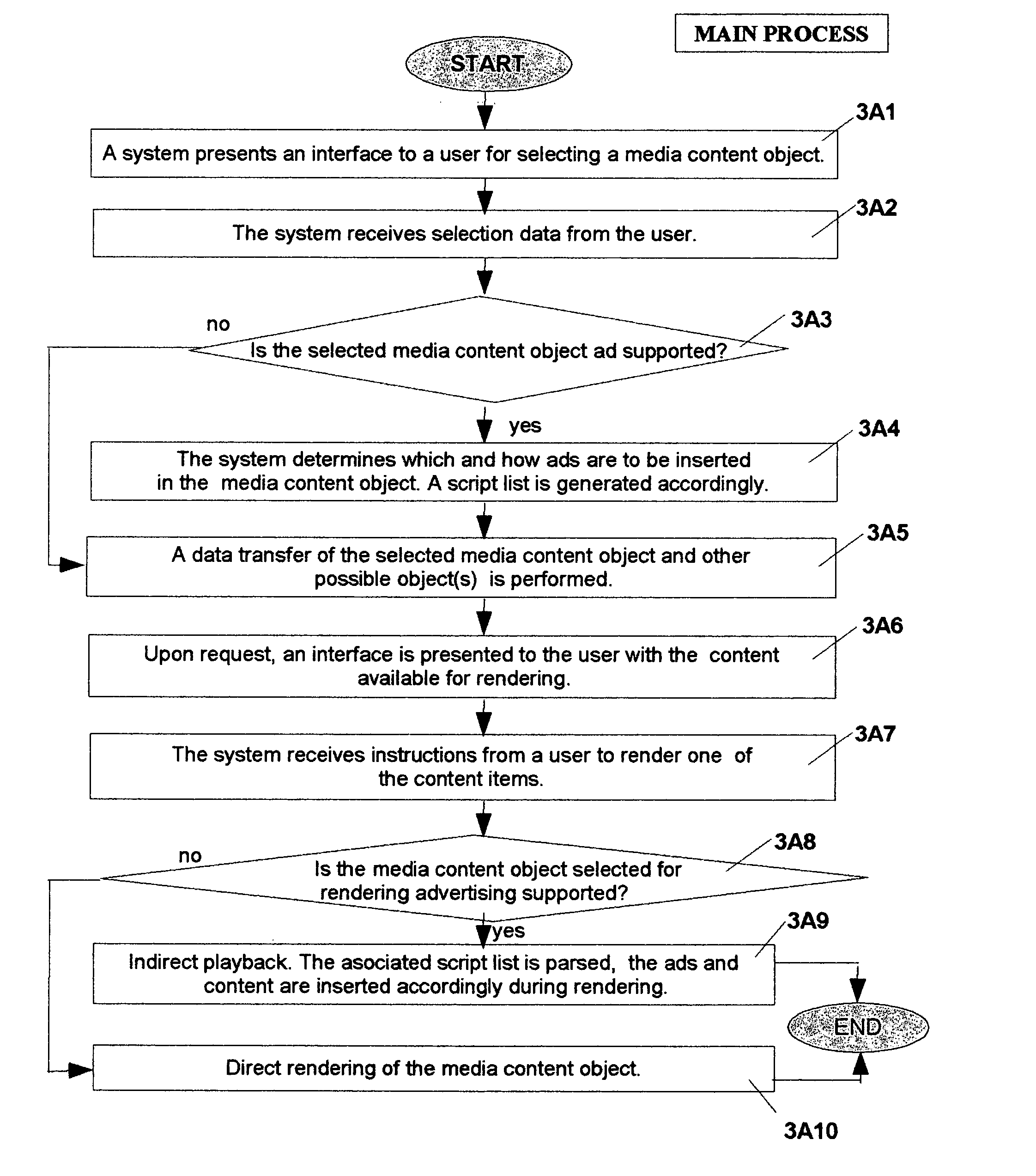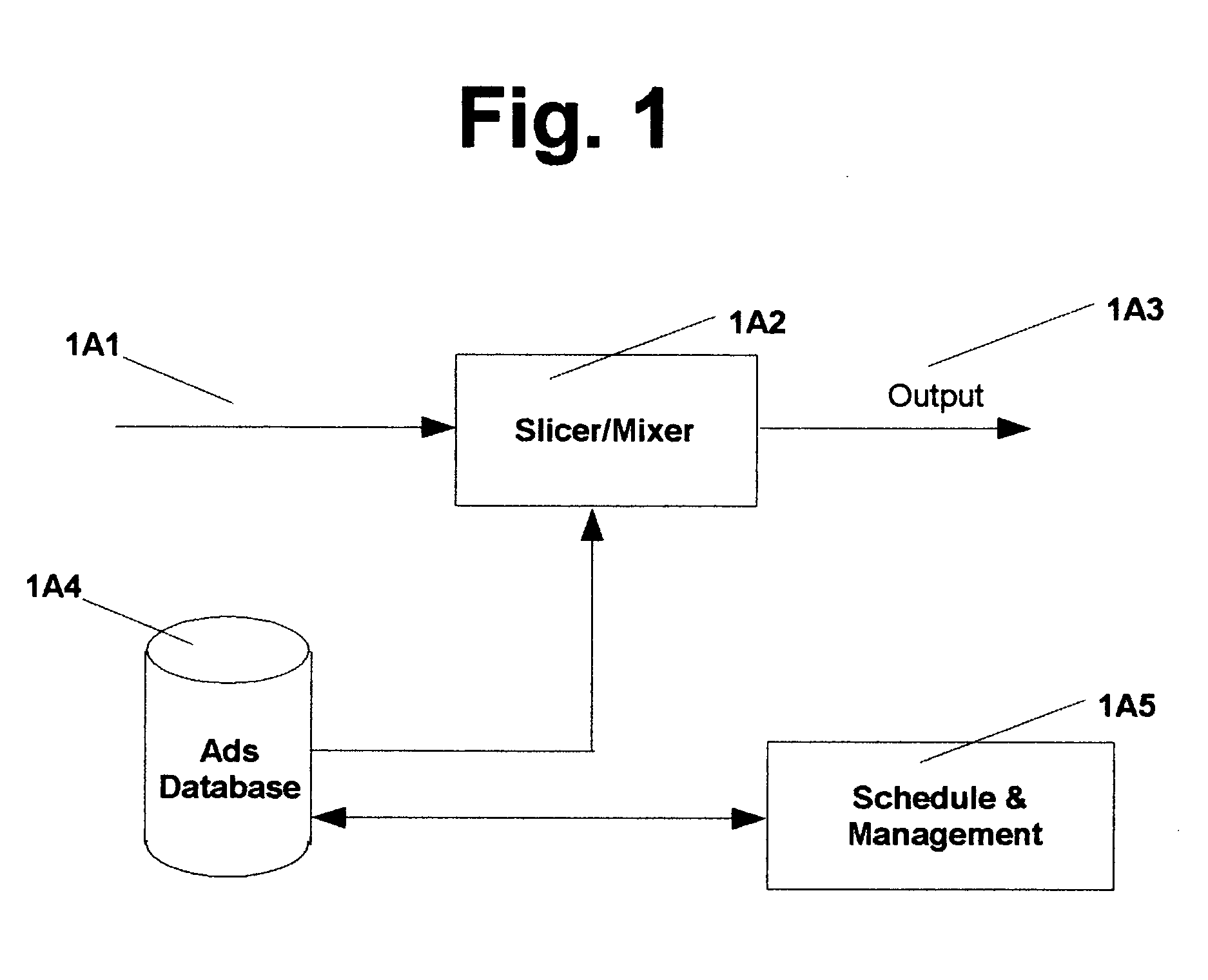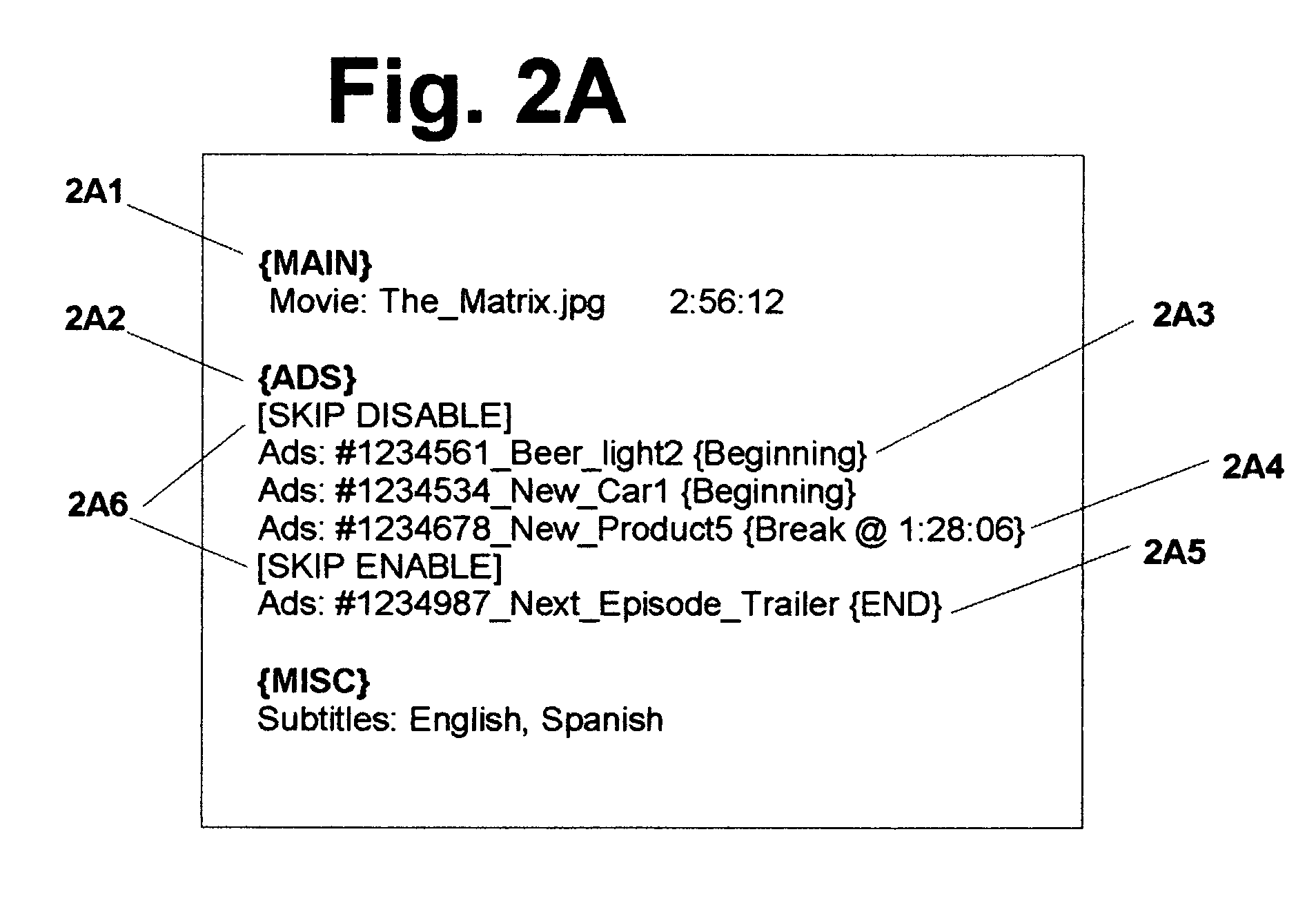There are major disadvantages associated with these systems.
They are extremely expensive because they require systems
multiplexing data at high speed.
They can only
handle a limited number of channels.
They are not able to deliver commercials customized for one identified viewer: they only customize ads for a determined, substantially large group of viewers.
They are unable to deliver customized advertising to each viewer because the number of streams that has to be multiplexed—and individually transmitted—is too high for the current transmission pipes and
signal mixers systems used by the operators.
In addition, these systems are not compatible with electronic networks, such as
the Internet, which makes these systems highly proprietary and difficult to inter-connect.
This creates inter-connection and cross-compatibility problems between equipment from different vendors.
These ad
insertion systems for streaming have a number of important limitations.
Perhaps the most significant limitation is the requirement that a link be maintained to the streaming
server that has to communicate (or trigger) information (or event) related to how and when the ads are to be inserted.
The real-time nature of ad
insertion with streaming is also incompatible with some business models, such as ads auction, since there is usually a too short period of time between the time a user selects a media
content object for playback (play button) and the time an ad is inserted.
With streaming, the resolution of the media content and ads made available to viewers is also lower than with systems disclosed in the present
patent application because of limitations related to the peak speed of the data transfers.
Using special caching servers or a
content delivery network buffer is often required which is expensive and often costs more than what the insertion of
multimedia ads can be sold for.
With streaming, the information transmitted to the media player also uses an
XML or SMIL format, which presents many security issues since
XML and SMIL are available under a
plain text format that can be edited and modified by end-users.
To cite yet another problem, streaming is not well- suited for portable multimedia devices such as, for example, the iPod device from Apple or similar devices.
There is currently no solution which would enable ad-supported streamed media content to be transferred to those devices.
This is a significant problem in the industry because it is anticipated that ad-supported content will represent a significant portion of the market.
Its implementation is extremely primitive with only advertising banners displayed on a
user interface.
Another major problem with these systems is that they do not control the content made available on their network, which prevents them from using a script insertion system or customizing ads for a particular type of content.
These systems do not use any advertising technology other than displaying web banners or other marketing messages on the screen of the end-user application before or during the download process.
Furthermore, such systems transfer filmed content files directly (such as movie1.jpg) between users, with no transfer of script lists and no manipulation possible on the filmed content file (no event insertion, no split for a linear sequencing, etc.).
The potential of these P2P paid-search technologies is also significantly limited because of the relatively low fee they can charge advertisers for only text link ads.
Customization of the ads is extremely limited in the ‘821’ system because the ads are only targeted to the characteristics of the media content file selected.
The process of encoding these analog signals is a complicated one which can take several hours to complete for each media
content object.
There are severe technological constraints that prevent the insertion of commercials targeted for each (or a small number of) users before (or during) the process of encoding the analog signals: it is not technologically feasible, it takes too much time, it yields to too many different customized output files, and it is too expensive to do.
Furthermore, technological constraints related to the
data transport prevent the delivery of too many different copies.
In particular, it can be demonstrated that too many different copies of the same content on a peer-to-peer or download network deteriorate the performance of the system because it limits the number of possible concurrent sources of data and / or the number of cached copies.
These systems have severe limitations since
XML metafiles are viewable by many viewers and, in the case of peer-to-peer download or pre-delivery, they could be modified to illegitimately skip the commercials.
 Login to View More
Login to View More  Login to View More
Login to View More 


